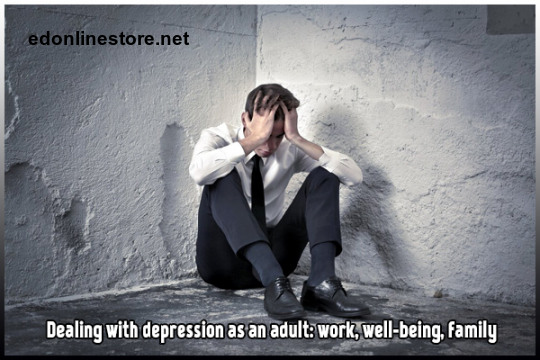Depression, or Major Depressive Disorder as diagnosed in the Diagnostic and Statistical Manual of Mental Disorders Fifth Edition is a common diagnosis among many people. Sufferers of depression often look for various methods to relieve the feelings of depression and to be able to function normally in life. People often feel depressed or sad at several different stages of life but many people ask what separates the feelings of sadness versus clinical depression. Depression affects a large number of people in America alone. According to the National Institute of Mental Health, approximately 17.3 million adults had at least one depressive episode in 2017. The average age of someone who suffers from depression is 18 to 25 years of age and women experience depression more often than men do. Depression is one of the most common mental health ailments that physicians diagnose.
Depression is characterized by several outstanding indicators which include a depressed feeling most of the day, every day, a decreased interest in activities that once brought pleasure, lack of sleep, feelings of worthlessness, and a loss of ability to concentrate. These indicators must be present for at least two weeks to be diagnosed with depression. There are many causes of depression including a chemical imbalance in the brain, external factors, including the death of someone close, or any other major events that the person experiences. There are also studies showing that depression can be a genetic condition which means it is passed down from generation to generation and if someone in your family has a history of depression you have a 40% chance of experiencing depression as well.

One of the most common forms of treatment for depression is medication. There are several different forms of medication that can be used to decrease the symptoms of depression including: Selective Serotonin Reuptake Inhibitors (SSRI), Serotonin and Norepinephrine Reuptake Inhibitors (SNRI), Monoamine Oxidase Inhibitor (MAOI), and tricyclic antidepressants. Many people refer to these medications as antidepressants. Some common name brand of antidepressants include: Prozac, Paxil, Celexa, Kamagra oral jelly in der Schweiz and Cymbalta. Medication for depression works by introducing more serotonin in the brain and the medication also helps the brain accept the extra serotonin. However, as with any other medication there are side effects such as weight gain, nausea, vomiting, and thoughts of suicide. Another form of treatment for depression is counseling with a licensed clinical social worker or a psychologist. There are several different forms of counseling that are effective for treating depression including cognitive behavioral therapy, dialectic behavioral therapy, crisis intervention and psychotherapy. Each form of therapy provides the person with an understanding and empowerment to be able to decrease the negative symptoms of depression. With the use of medication and therapy, the person suffering from depression has a better chance of developing coping skills that they can use in the future.
There are other sources of treatment for people who suffer from depression that include Electroconvulsive Therapy (ECT). Electroconvulsive Therapy was first developed in 1938 and has been used for people who suffer from depression when other forms of modalities do not work. Electroconvulsive Therapy produces an electric current that travels across the brain inducing seizure activity to decrease symptoms of depression. However ECT is only effective about 50% of the time and can cause long lasting negative side effects. ECT is only used when every other modality failed to produce relief of the depression. Depression, as with any other medical condition comes with complications. Some complications of depression are loss of employment, the breakdown of a family and suicide. Death by suicide is common with people who suffer from depression. Therefore, when someone is experiencing depression, it is important to assess their risk for suicide or any other self-injurious behaviors.
There are many other diagnoses that co-occur with depression including: bipolar disorder, anxiety, obsessive compulsive disorders, personality disorders, mood disorders and post-traumatic stress disorder. Each additional diagnosis has the capability to increase the negative effects of depression. One very common co-occuring diagnosis is generalized anxiety disorder. This is characterized by anxiety that cannot be explained by any other factor. The person experiences many physical ailments including increased heart rate, the feeling of doom, sweating, shaking, and a stomach ache that are not related to any other medical issue. Treatment for anxiety is similar to treatment for depression, including the use of medication and counseling.
In conclusion, depression is a common mental health diagnosis that can cause issues in many different parts of an individual’s life. Fortunately, depression is a treatable condition and there are many different modalities that can be used to treat it.

I am General practitioner (GP) in Melbourne since 2006.

